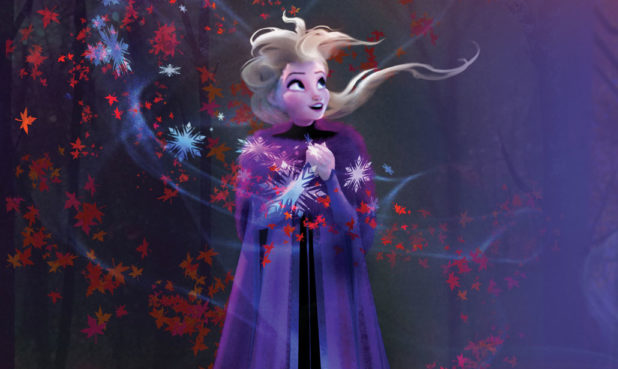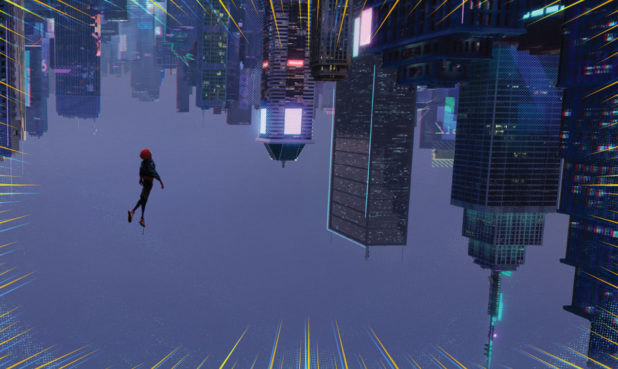It was a dark and eerie night… but then when is it not in Hotel Transylvania? After all, the premise of the Sony Pictures Animation films is that Count Dracula has gotten into the hospitality industry because monsters need vacations too. And when your lead is the most famous vampire of all times, there will be a lot of night shots—necessary evils that may make for murky storytelling when it comes to animating this world on film.
An excess of black and blue hues could be worked around for the first two movies, which use mainly interior images, but franchise director Genndy Tartakovsky raised the stakes for the third film, Hotel Transylvania 3: Summer Vacation, which centers on Drac’s daughter Mavis booking a cruise for the whole gang because she believes her dad is in desperate need of his own getaway.
This, however, did not mean the film’s team of artists could also kick back and relax. In addition to the reality that all scenes needed to be set after sunset and also would largely be taking place outside, there were a host of new locales that required designs. These included a plane, a train and an automobile. But most impressive was the monster ship – a term that could be used to describe both its intended inhabitants and its massive scale.
Tartakovsky says he came up with the idea for the script, which he co-wrote with Boss Baby’s Michael McCullers, after his own experiences on a recent family cruise with his in-laws. The hectic atmosphere that enveloped him when he boarded his vacation liner made him realize that it was “a perfect setting for our monster family. It’s just like the hotel, but on the water. All the jokes could be familiar because we have this hotel setting, but completely different and we get to do excursions.”
Hotel Transylvania 3 is also goofier; an animator’s movie.
“I would say, there is 40 to 50 percent less dialogue in this movie than the first two and we probably have about three or four sequences that are purely visual with no dialogue,” Tartakovsky says. “There’s more physical humor.”
Not only was this handy for the artistic team – story artist Chris Reccardi tells us that Tartakovsky’s background “made for an enjoyable, visually stimulating process with lots [of] funny poses and acting” – but the director says this also gave him a chance to break free of the doom and gloom of the hotel and add a bit of color. Luckily, he knew just the guy for the job. He tapped Scott Wills, the art director from his Cartoon Network series Samurai Jack, to serve as production designer.

“It took me a while to realize that every sequence is at night,” Wills admits. “We have one sequence that’s at dawn and everything else is at night. It’s crazy because, not only are you limited because it’s at night, but you can’t make these movies dark. This is a family comedy. It has to be bright.”
Wills says that the studio’s decision to move the film from a fall to a summer release compounded the pressure because that season already puts us in the mood for flashy neon pinks, purples and oranges. So Wills sought to infuse the night sky with a myriad of hues by, for example, invoking pre-dawn or dusk skies.
“When we have day to night transitions, we’ll say the sun’s coming up so there’s a sunrise. That gives me another trick to have a bright warm sky, but it’s not day because we can’t have day because it’s vampires,” says Wills. “We just try to be as bright and as colorful as we can. It’s super colorful, but I feel like I have no colors left in the spectrum.”
Visual development artist Lizzie Nichols adds that “we had this beautiful cool moonlight as our ambient light, and added warm local lighting to the characters as needed.” Her background is in painting – she was hired as a painter before switching to the environmental design team – and she says she always includes “places in my designs for light sources” such as hanging lamps or candles. She says she then tries to “create shapes where the ambient light can fall on surfaces and interact with the space in an interesting way.”
“Of course, you have to think about where the characters will perform, and how light will fall on the characters as they sit or move within the space,” she says, adding that working in CG allows them to place the light wherever they like. “But giving the light at least some indication of where it might logically come from within the space lends the environment a lot more realism and appeal.”
Nichols admits that she’s still fairly new to the business – this is the first film she’s worked on where she spent more time designing than painting – and she’s grateful to people like Wills and Tartakovsky because “they allowed me to take risks and try new things, but gave excellent guidance and direction when I needed it.”
Tartakovsky and story artist Reccardi say that Wills’ ability to produce such hue combinations is a gift to the film. It’s so good that the untrained eye might not even notice the amount of work that went into it. After all, as Reccardi reminds, this is not a film about moonlit cruises.
This point could not be more obvious than with the film’s climax, an elaborate kaleidoscopic DJ battle that involves controlling the mind of a lounge-singing kraken. It’s the scene Tartakovsky’s most proud of because “it’s so huge and there’s still funny elements and the action is super cool.”
Reccardi, who also has experience directing, says that he used Toon Boom StoryBoard Pro to digitally board some sequences “with timing and synced to the rough music track.” This was particularly useful for the dance scenes and montages. He used the software for an early version of a light-hearted bit where Drac, having embraced the laissez-faire vacation lifestyle by shedding his drab duds for Hawaiian-printed leisure wear, struts his stuff along the ship to the tune of Bruno Mars’ “24K Magic” while en route to a dinner date.
All of this action also had to jibe with the ship itself, an Old World-meets-New World hybrid that art director Christian Schellewald says he was inspired to create after a visit to the historic Queen Mary vessel in Long Beach and after researching the Titanic.
“First and foremost, the Dracula world has a lot of modern things,” Schellewald says while we thumb through his bound pages of intricate sketches that include details of anchors, portholes and crowded staircases. “It has smart phones and things like that, but there are a lot of retro [influences] … We looked at modern-day cruise ships and they all look like floating casinos and they don’t have much charm. So we went back to the golden days of ocean travel.”
The end result is a multi-tiered white behemoth with sharp angles that allow for the acrobatic stunts of Captain Ericka Van Helsing. Yet somehow, just like a real cruise ship, it still looks crowded once you add in all those monsters.
“One of the fun things is that you do a design and it looks great from all sides,” Schellewald says. “But when you actually have tall monsters populating this ship, you realize, hey, this is fairly compressed and now they have to all get down the stairs.”
Little facts like overcrowded ships can be headaches to design, but they also help tether the film to real-world experiences that both add to the humor and decrease chances that this movie about the creatures usually relegated to nightmares will scare children.
“The fun thing for me is there is a fair amount of real physics working in the movie, but there’s all kinds of crazy stuff happening too,” Schellewald says, describing a scene he sketched of the Bermuda Triangle that features a “stockpile of original ships” to which he was able to “add weight and rust” for believability. He says the goal was to take a “setting with the most outrageous material [and] make it realistic.”
More original artwork can be seen at ArtOfHotelTransylvania3.com





